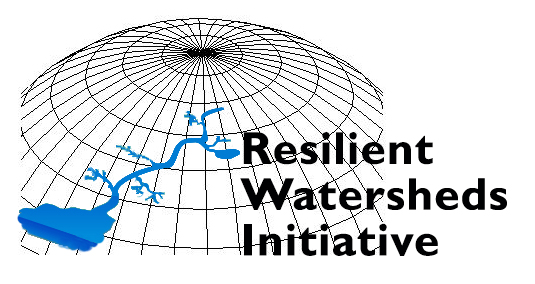
ISTC NEWS
Initiative Aims to Calculate ‘Value’ of Entire Illinois River Watersheds
CHAMPAIGN, Ill. — The White House Water Summit today highlighted the Resilient Watersheds Initiative of the Prairie Research Institute at the University of Illinois in its announcement of new measurable steps being taken across the country to address key water issues.
The White House Water Summit Fact Sheet and the Commitments to Action on Building a Sustainable Water Future report are both available online.
The Resilient Watersheds Initiative seeks to provide a science-based and data-driven approach to promoting resilient, sustainable Illinois watersheds. The interdisciplinary approach includes expertise from the Prairie Research Institute (PRI), Illinois-Indiana Sea Grant, other departments across the University, as well as researchers at the National Great Rivers Research and Education Center in Alton, Ill.
The initiative will organize available data into a multi-dimensional model of the tangible ecosystem benefits watersheds provide (e.g., water storage and filtration, groundwater recharge, biodiversity) in addition to the value they represent for food, drinking water, swimming, fishing, boating, and tourism, etc.
The concept is called Value-based Landscape Design, which works to create tools that evaluate the potential of every acre of habitat. PRI is already engaged in landscape design projects related to the Lower Fox River and Green Bay ecosystems in Wisconsin, as well as Great Lakes coastal wetlands. This latter project was recognized by the White House in April, 2015 as one of the first four Resilient Lands and Waters Initiatives.
The Resilient Watersheds Initiative has set an ambitious goal of building integrated models of the entire Illinois River watershed. Areas suggested as starting points, due to the vast amount of information already available, include the Spoon River and Kankakee River watersheds.
PRI has for decades conducted extensive studies of Illinois’ fisheries, water quality, water supply, floodplains, wildlife habitat, and invasive species, just to name a few, through research by four of its divisions—the Ill. Natural History Survey, Ill. State Geological Survey, Ill. State Water Survey, and Ill. Sustainable Technology Center. The Watersheds Initiative builds on and integrates these efforts.
“The complexity of natural ecosystems, human impacts on them, and the value they represent to us, transcends boundaries of geography, political borders, and science disciplines,” said Brian Anderson, senior deputy executive director of PRI.
“Illinois watersheds are predominantly working landscapes,” added Laura Kammin, outreach program leader at Illinois-Indiana Sea Grant. “A framework that underscores the broad spectrum of values and the tangible benefits watersheds provide, and quantifies how those benefits change with changes in land-uses and practices, will help us make the best informed decisions for future planning.”
A preliminary report “The Resilient Watersheds Initiative: A Value-based Landscape Design Approach to Promote Watershed Resiliency though Collaboration” was drafted in fall 2015 to set the stage for planning and implementation of the initiative in spring 2016. The organization for the initiative is shown in Figure 1 of that document. Please contact Laura Kammin, or Brian Anderson, for additional information.
The White House Summit coincided with World Water Day.

